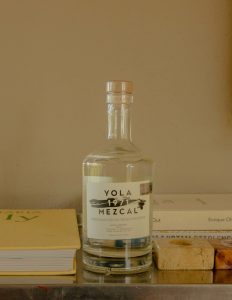- That revolutions can follow a similar formats, and that there can be similar causes and trajectories.
- There are different forms of protest, and some of these forms can be feminine.
- How to write a primary source essay.
Author Archives: Mia Stevens
Peer review thoughts
(I could only find the feedback that was on my talk page, I was unable to find the feedback through the WikiEd page) Anyway the main feedback I received was to separate out the international reception of Caffarena’s work from the national one. I think that this is a really great idea, I think that the majority of my sources are internationally based. I will continue to look for ones from Chile but my lack of spanish speaking skills may pose a barrier. Even if I am unable to find national sources I think I will title the section as “International Reception of Work” just to add emphasis that the source material is internationally based.
Elena Caffarena
This represents Latin American history because it discusses the Chilean women’s emancipation movement. There is very little to this article which makes discerning if there are any biases difficult. It does not start with mentioning that she has a journalist granddaughter, but it was included. There are currently only two sources used, one is a book that discusses all of the Latin American countries and how they changed over time. The other is a biography of her life written by the Chilean national library. This source is in Spanish and as a non-speaker I am not sure how helpful it will be, it may cite other sources that are in English which would be helpful. I will improve this article by adding much more content too it. Fleshing out the details of the work she did, and of her life. I could also add a section on how her work was received (if there is any information on this.
Haydée Santamaría
- Is everything in the article relevant to the article topic? Is there anything that distracted you?
For the most part everything is relevant, in the section about Santamaria’s life and death they discuss her family as an aside when they are discussing her depression. I found this to be distracting, I would have written them as separate sections or even paragraphs because they did not seem too related. The article spends too much time talking about Castro and Che, how Santamaria helped them, at times this article reads more like an article about them not her. For example, it discusses how Castro wrote in lemon juice in his manifesto to hide a secret message, as interesting as this piece of trivia is it has nothing to do with Santamaria.
- Is the article neutral? Are there any claims, or frames, that appear heavily biased toward a particular position?
The article seems very neutral, it does not go into Santamaria’s politics just her life and what she was able to accomplish for the revolution.
- Are there viewpoints that are over-represented, or under-represented?
The article did not discuss her politics or Batista regimes feelings towards her, only that they saw her has a threat. These viewpoints could be included more in the article but it implies how the government feels towards her.
- Check a few citations. Do the links work? Does the source support the claims in the article?
All of the citations except two do not have links attached. The two that have links are working and they sources do seem to say what the article claims. However, there is a lot more information in the sources that was not included in the article, which is highly disappointing.
- Is each fact referenced with an appropriate, reliable reference? Where does the information come from? Are these neutral sources? If biased, is that bias noted?
This article needs many more citations, I am a bit of an over citer but this article goes multiple sentences without citing. From what I can tell most of the citations are from American scholars which will bias the analysis, this bias is not acknowledged. There seems to be only five original sources that the authors just cite over and over again.
- Is any information out of date? Is anything missing that could be added?
I would have like to see more about her personal feelings about the revolution, why she was motivated to join. Since none of this is in the article and it would add a lot to the article.
- Check out the Talk page of the article. What kinds of conversations, if any, are going on behind the scenes about how to represent this topic?
There is nothing on the Talk page.
- How is the article rated? Is it a part of any WikiProjects?
This article is rated start class. It is a part of Biography, Articles for creation, Cuba, and Women’s History.
- How does the way Wikipedia discusses this topic differ from the way we’ve talked about it in class?
The article discusses Santamaria’s depression and her suicide which we did not discuss in class. Other than that there was little difference in content covered. But Wikipedia definitely framed her involvement in the revolution more around how she helped the male leaders than we did in class.
P.S. When I wrote this no one had used this article, but I didn’t post it for a while, so here we are.
Class Notes 9/16/19
Class started with Max’s LA in the news which was about the Argentinian agricultural industry. The government is switching from corn being the main crop to soy beans. Soy is a much less reliable crop when compared to corn. It is cheaper to grow which is why the switch was made. The corn market in the US maybe not great shape this winter because of this change, there will be a decrease in corn supply.
Dr. Holt discussed how the Cuban revolution is different from the other Latin American revolutions because it was a Spanish colony for much longer. Once Cuba became free it became a protectorate of the US. Cuba was dependent on the US for its economy. We then broke up into groups to discuss how the Cuban revolution fits the DeFronzo’s framework.
Mass frustration—poverty, inequality, corruption, neo-colonialism, censorship, exploitation (US controlled land)
Dissident elites—Castro as an elite since he was educated, also had alliances with students
Cross-class unification—Unified under Anti-Batista, and against brutality
Political crisis—the sugar economy was going downhill, limited profit over the course of the year, also the puppet president
Permissive world context—US scared about communism. At first the US was permissive about the revolution but once Castro shifted more towards the left end of the political spectrum the US became more nervous.
Exam Questions:
-Does the Cuban Revolution fit DeFronzo’s framework why or why not?
-How does the US’s view of the revolution change over the course of the revolution?
Links:
LA in the News: Mezcal by Women
The article I read was about a woman run mezcal business called Yola Mezcal. The main focus of the article is Yola Jimenez, who started the company. She was born in Mexico City but her grandfather started distilling mezcal for fun but it grew into a business. All the agave is still grown in Oaxaca and from growing to distributing the mezcal is mainly made by women. The article quotes Jimenez saying “some of [workers] are the granddaughters of the distillery’s original workers.” This shows how much the mezcal business is a part of the culture, that it is more than a business but a part of society.

Yola Jimenez
The business spans the US-Mexican border with all the agave being grown in Mexico but the company being run from Silver Lake, LA. Jimenez runs the business with two other partners Lykke Li and Gina Corrnell Aglietti. Each partner running a different section of the business but Aglietti is the CEO of the company. The article also quotes Aglietti discussing the sales plan saying “we brought it up in an informal way, we brought it up as a family.” This choice of quote by the author shows how much of a family this company is and these three women who run this company. The article mentions a music festival organized by the company called Yola Día which had an all-female line up (including Megan Thee Stallion), was organized by women, and women lead security teams.

A bottle of Yola Mezcal ($69.99)
This article does not really focus on Mexico, more on the company itself. It was interesting how they are highlighting the business success in the US and less on the women in Mexico and the cultural significance. The article discusses how this was Jimenez’s grandfather started the discusses but not what it means to the culture.
In class we have been discussing Díaz who is from Oaxaca which is where Yola Mezcal has its farms. I know this is a bit of a stretch but I think it is a funny coincidence. The company’s website explains more about the importance of distilling Mezcal to the culture which informs us of the cultural background of Díaz. In class we also have mentioned the importance of women in the revolution so it is interesting the parallels between the strong women in the revolution and the women who run this company.
